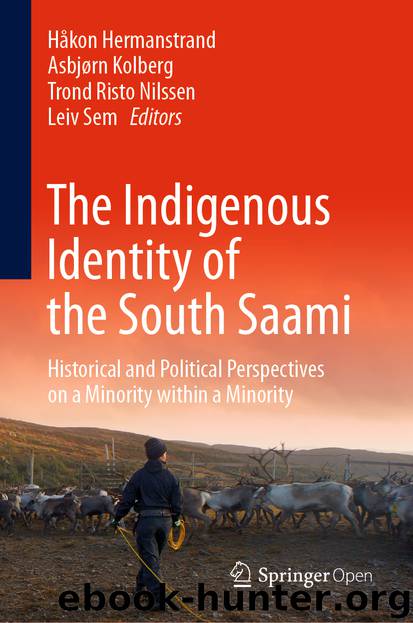The Indigenous Identity of the South Saami by Håkon Hermanstrand & Asbjørn Kolberg & Trond Risto Nilssen & Leiv Sem

Author:Håkon Hermanstrand & Asbjørn Kolberg & Trond Risto Nilssen & Leiv Sem
Language: eng
Format: epub
ISBN: 9783030050290
Publisher: Springer International Publishing
6.2 The Bad Reputation of Picture Postcards
The bad reputation of picture postcards is of course due to photographs’ colonial role as technologies of cultural appropriation, racism, denigration, sexual exploitation, assimilation and misrepresentation (see for example, Alloula 1986; Edwards 1992; Faris 2003; King and Lidchi 1998), but also due to their connection to commercialism and popular culture (see for example, Rydell 1998; Maxwell 1999). It seems indicative of this negative understanding that postcards have not been considered historically significant and information has not been collected, catalogued or housed as with other historical material until recently (see for example, Woody 1998, 22). As pointed out by art historian Sigrid Lien, taking into consideration the Saami ethnopolitical movement that began to take form in the 1960s and 1970s, postcard representations came to be considered as objects of contempt or symbols of oppression (Lien 2017, 210). ‘Postcard-Saami is a notion, you know,’ a curator later explained to her and social anthropologist Hilde Nielssen during their study of the use of photography at RiddoDuoattarMuseat-Saamiid Vuorká-Dávvirat in Karasjok, Northern Norway (Lien and Nielsen 2012, 299). ‘For the Saami, “postcard” used to be a term of abuse,’ the curator continued referring to the way photography has been misused in the name of science, ‘you know, with measuring skulls and so on’. One of the first to voice this view was the Saami multimedia artist Nils Aslak Valkeapää. Commenting on the irony in the title of his book, Greetings from Lapland (originally published in Finnish in 1970) and the practice of producing postcards masquerading non-Saami as Saami, Valkeapää explains: ‘The title comes from the innumerable postcards which attempt to depict Samiland and the Samis. Almost all of them are dreadful, insulting: non-Samis in thoroughly tasteless, ugly imitations of Sami dress’ (Valkeapää 1983, 1; Lien 2017, 10).
Download
This site does not store any files on its server. We only index and link to content provided by other sites. Please contact the content providers to delete copyright contents if any and email us, we'll remove relevant links or contents immediately.
| Anthropology | Archaeology |
| Philosophy | Politics & Government |
| Social Sciences | Sociology |
| Women's Studies |
Mysteries by Colin Wilson(3394)
People of the Earth: An Introduction to World Prehistory by Dr. Brian Fagan & Nadia Durrani(2701)
Ancient Worlds by Michael Scott(2622)
Foreign Devils on the Silk Road: The Search for the Lost Treasures of Central Asia by Peter Hopkirk(2433)
The Splendid and the Vile by Erik Larson(2354)
The Memory Code by Lynne Kelly(2352)
Come, Tell Me How You Live by Mallowan Agatha Christie(2212)
Lost Technologies of Ancient Egypt by Christopher Dunn(2194)
The Earth Chronicles Handbook by Zecharia Sitchin(2179)
The Plantagenets by Dan Jones(2039)
Last Chance to See by Douglas Adams(1933)
The Return of the Gods by Erich von Daniken(1895)
Wars of the Anunnaki by Chris H. Hardy(1681)
Keeper of Genesis by Graham Hancock(1607)
Before the Dawn by Nicholas Wade(1575)
The Cygnus Mystery by Andrew Collins(1520)
The Message of the Sphinx by Graham Hancock(1482)
Fragile Lives by Stephen Westaby(1421)
Hieroglyphs: A Very Short Introduction by Penelope Wilson(1312)
